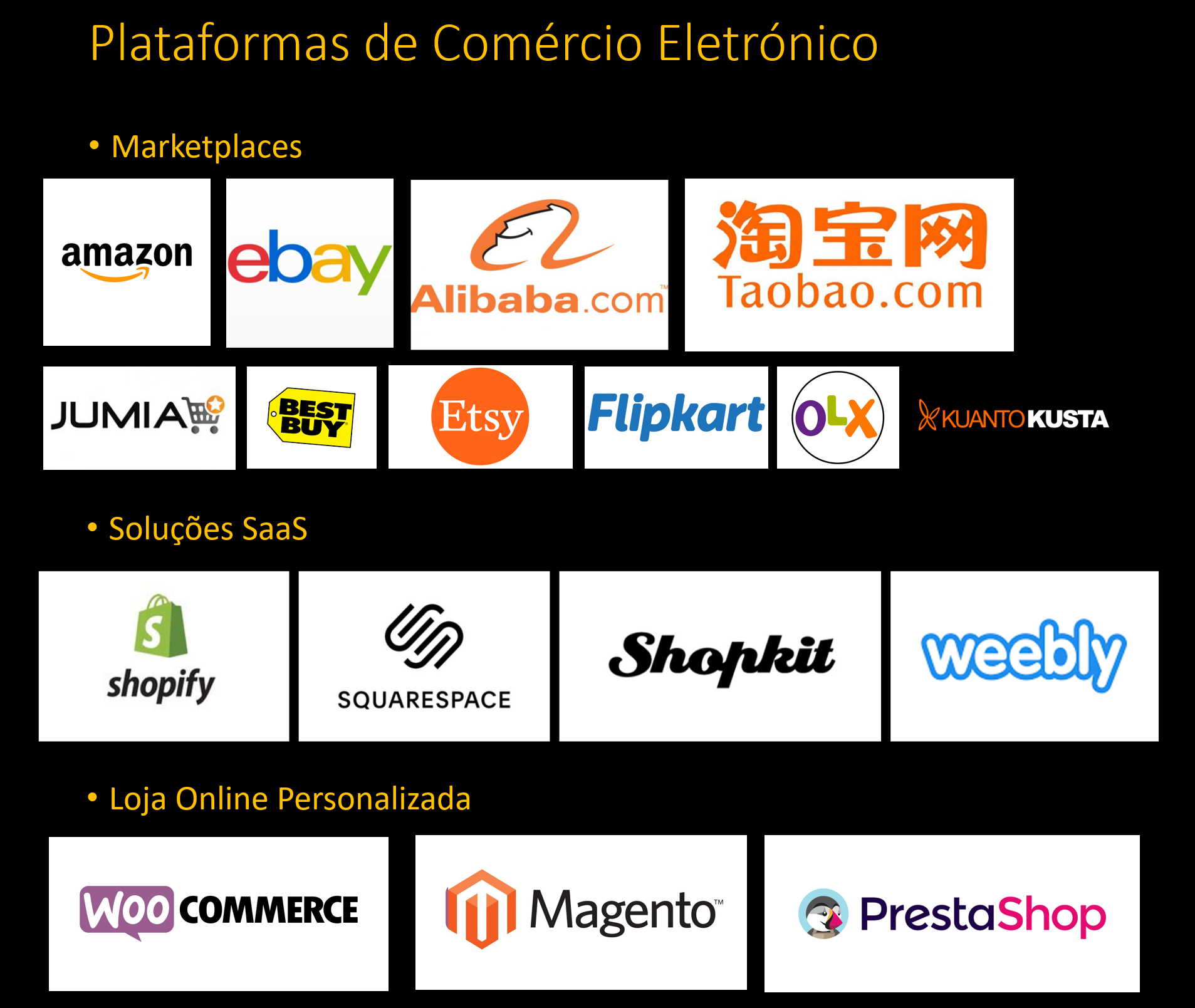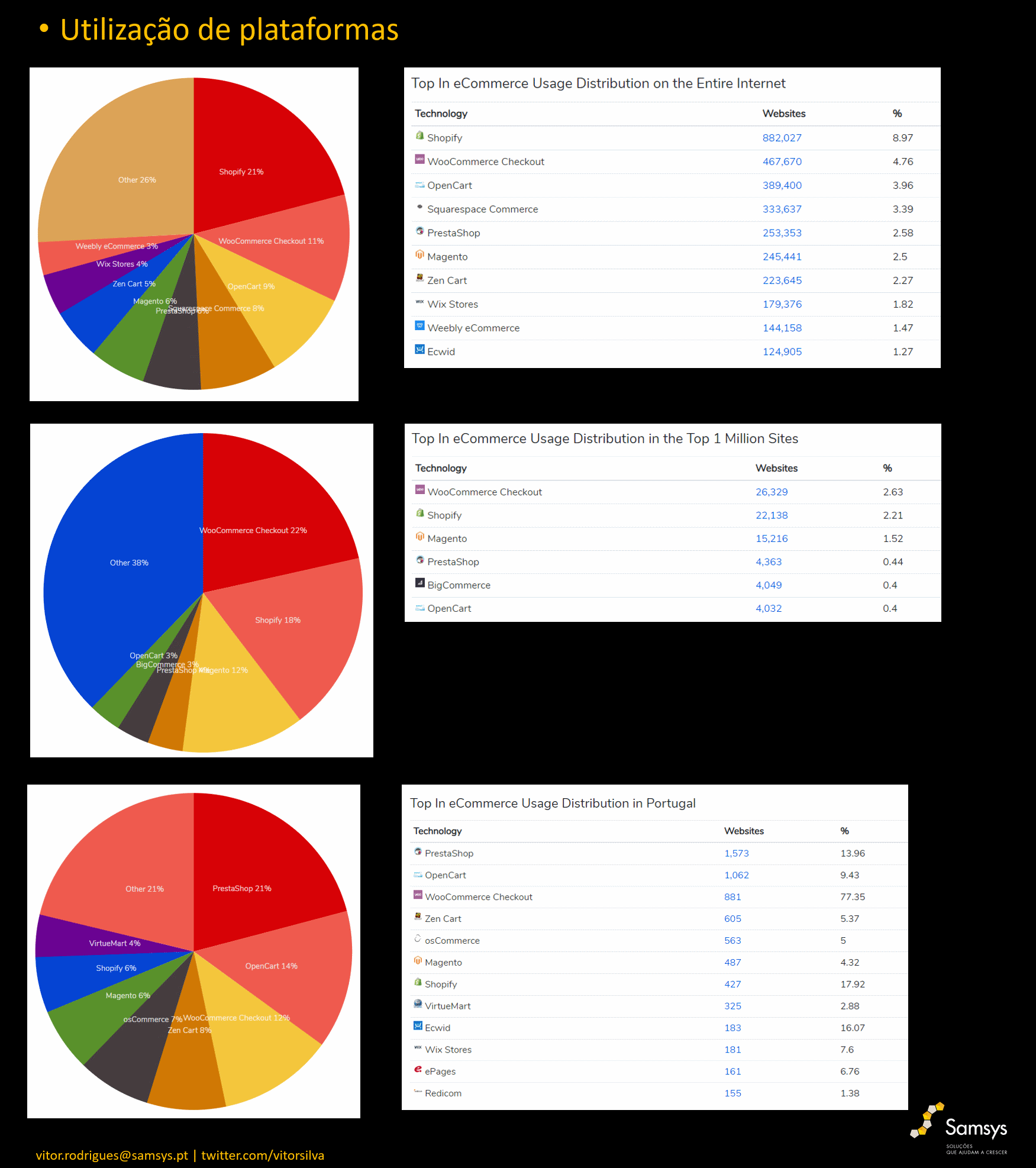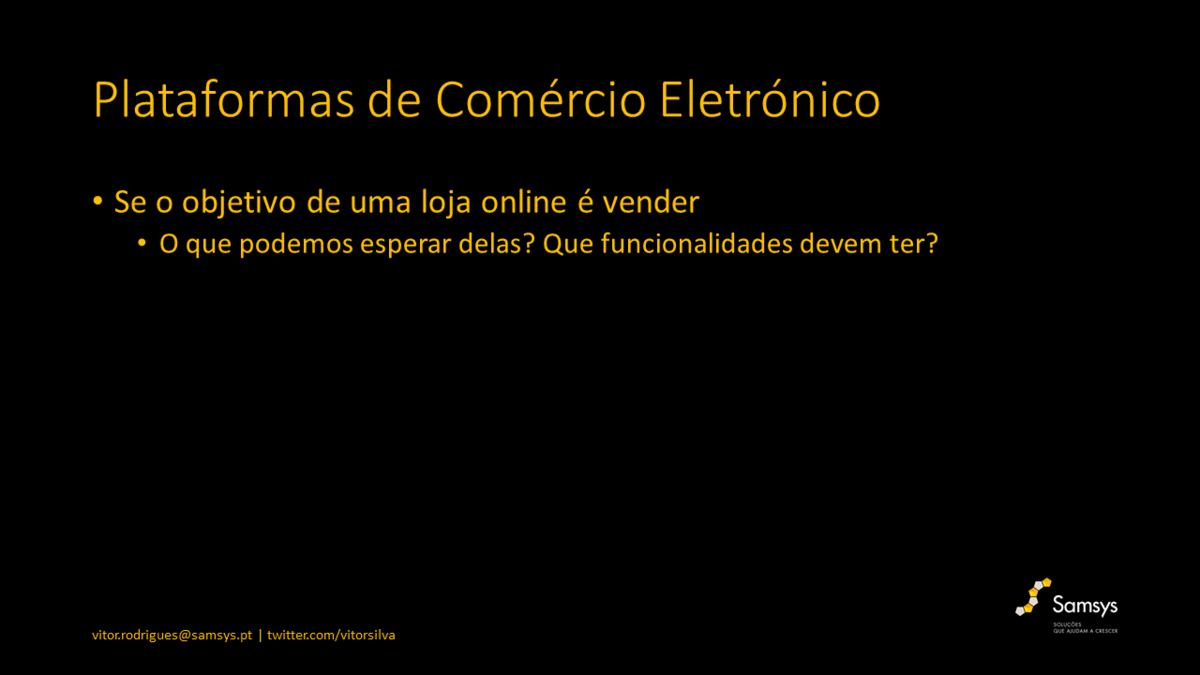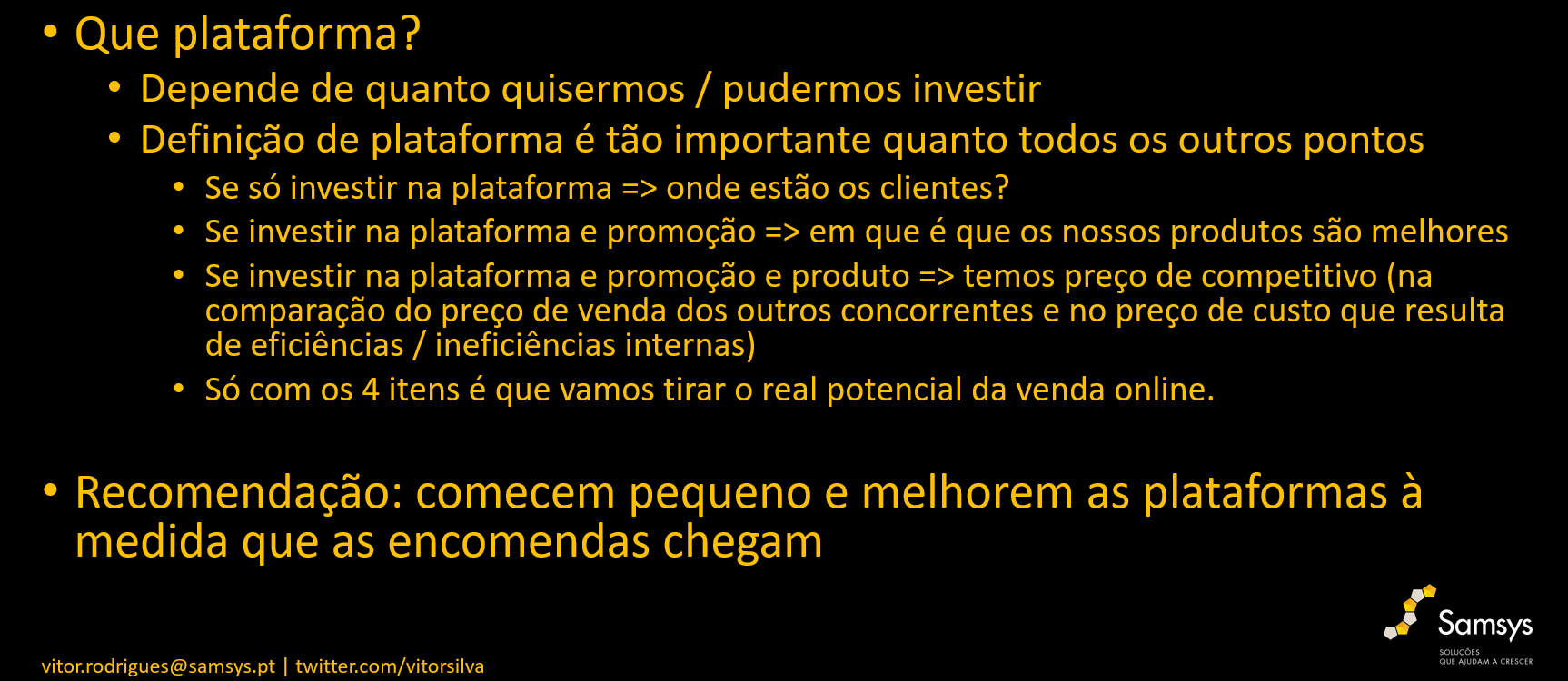On April 29, 2019, we participated in the Lusíada University (Famalicão) in an open class of the Management and Marketing course on Electronic Commerce. Taking into account the theme and the students to whom we were going to speak, it seemed interesting to us to make an initial framework between Traditional Commerce and Electronic Commerce, and then to make the connection between the 4 Ps of Marketing (Product, Price, Place, Promotion) and how they relate to this theme.
How Electronic Commerce relates to Traditional Commerce
Samsys, in its different areas of activity, works a lot with SMEs, some in areas more related to B2C commerce, which will be the example that most easily approaches the traditional scenario of Electronic Commerce, in terms of the online store.
These companies typically follow 3 models with regard to their physical facilities: they may own a street store; they may have a leased store or they may be located in a shopping center, or another type of space managed by another entity.
In the same way, the approach that we can have an online presence and mainly to trade online can also have these 3 types of options: Personalized Online Store; SaaS solution; MarketPlace.

Customized Online Store
A personalized online store, that is, having a website built to measure for us, in the same way as owning a store, allows a greater degree of flexibility in terms of how we want to show, publicize, market our product.
Just as investing in the purchase of a physical store implies a greater initial investment, this approach also has this characteristic, which should be considered together with the need to subsequently have a communication plan to continue promoting the store, and therefore we often advise our clients to start with less ambitious solutions than what they ask of us.
However this is undoubtedly the solution that, after the implementation is complete, will respond to all the wishes of the business owner.
Leased Store / SaaS Solution
In a leased store, what can be identified as the biggest advantage, in relation to the previous option of own store, is precisely the lower initial investment.
This advantage, however, comes with the consequence of not being able to do with it everything we want, but only what the landlord, in the case of a physical store, or the service provider, in the case of an online store, allows us to do.
This type of solution is typically sold through subscription, that is, a monthly fee is paid, which gives the right to use the platform to those who pay it.
It is a solution that in the short term, it allows, with a reduced investment, to start the online marketing process, however, in the long term, it can have a greater accumulated investment value.
MarketPlace
Finally, we have marketplace-type platforms, which in the physical world we can compare to shopping centers, where, in addition to the ownership being of the platform itself (shopping centre), it allows the merchant to immediately enjoy the entire public that already accesses the mall. thus achieving having since the opening of the store a greater number of people passing in front of it.

Use of Electronic Commerce Platforms in Portugal and in the World
Looking at worldwide trends, we realize that, considering the entire internet, Shopify is ahead (a SaaS solution) and WooCommerce is 2nd with half that percentage. Something that may have to do with the fact that it is easier to start with a solution already built and ready to use than having to install and configure it.
Considering the top 1 million most visited websites worldwide, the situation is reversed although WooCommerce and Shopify have very similar values.
Finally in Portugal we can see that Prestashop is still the most used (in terms of share). It should be noted that, taking into account Samsys' experience in implementing WordPress solutions, we have privileged the implementation of WordPress solutions with WooCommerce

What can we expect from an E-Commerce platform?
One of the most recurring issues in online store implementation projects has to do with the fact that something that is apparently simple (I just want to sell online), when detailed, becomes a very large and complex project.
In fact, this should come as no surprise as selling online involves, in some ways, the same kind of effort as selling in a physical store. Hence, all the things we do in a physical store (promotions, highlights, customer management, store customization, etc.) will have to be implemented in the online store as well.

This is where I think it's interesting to use the 4Ps of Marketing approach to help us distinguish between superfluous and essential features, or, more importantly, priority features from those that can be implemented later.
Remembering the 4Ps – Product Marketing Mix
- Product – what is the product
- Price – how much will it cost
- Place – channels used
- Promotion – dissemination strategies
In other words, we have to know our product, understand the pricing strategy we are going to use, define the distribution channels and the places where it will be and understand how we are going to publicize and promote it.
(If we are talking about services, then there are still other issues to consider – see 8Ps of Marketing Services)
In this sense, we can say that the e-commerce platform is the “Place”, that is, it is one of the channels that we are going to use.
One of the major challenges in implementing online store projects arises when the Online Store is not integrated into the rest of the overall Marketing strategy or, worse, when this strategy does not even exist.
In a perfect world:
- we have the best product in the world;
- we have the best pricing strategy in the world;
- we have the best platform in the world;
- We managed to reach all our target audience.
But of course the reality is not like that. If we were ever going to have it all, it's because we had unlimited money, unlimited people, and unlimited time. This means that we will have to make choices.
Below we list some issues that we know are necessary to take into account when following the process of implementing an online store.
Promotion
- How do we promote a new store?
- Online media – Adwords, Facebook Ads, Landing Page, …
- Offline Media – Flyers, Street Advertising, Direct Mailing, Events, …
- How are we going to maintain the connection with the customer?
- Online media – Follow-up newsletters, Instant Messaging, re-targeting,…
- Offline Media – Gifts, Events,
- What content do we have
- Photos and texts about the product with quality?
Price
- Have we already defined how we are going to incorporate (or not) issues such as additional shipping costs and/or payment fees in the final value of the product?
- Comparison between online and offline prices
- Comparison with online competitors
- Specific promotions?
- Points cards?
Product
- What sets you apart from the competition, knowing that the competition is just a click away
Place / Location
- Platform (Online Store)
- Internal administrative process
- What will be done differently to integrate a new sales channel?
- Who sees the mail with the order?
- Is the delivery / packaging process thought out?
Challenges of supporting a traditional commerce store to implement an online store
Usually when someone who has a traditional commerce, or someone who is just starting up, thinks about opening an online store, they usually think about the platform, its features.
Our role, as consultants, is to take this energy from customers, very focused on the platform… because they believe that is all that is missing, and help to focus on all these other points (because only then will we extract the full potential of e-commerce).
And it really has to be a complete and integral approach, because, for example, if you only invest in the platform, how will customers know it exists?
If you only invest in the platform and promotion in which our products will be better than the competition (and which are just a click away).
If I invest in the platform, promotion and product and forget about the price, will it be competitive (in comparing the sales price of other competitors and the cost price that results from internal efficiencies / inefficiencies).
Only with the 4 items are we going to unlock the real potential of online sales.

As part of the collaboration that Samsys likes to have with Schools and Universities in the country, and which is also complemented with internship programs frequently, if you feel that this type of presentation, or another on similar topics, may be relevant to your students, please contact us.









